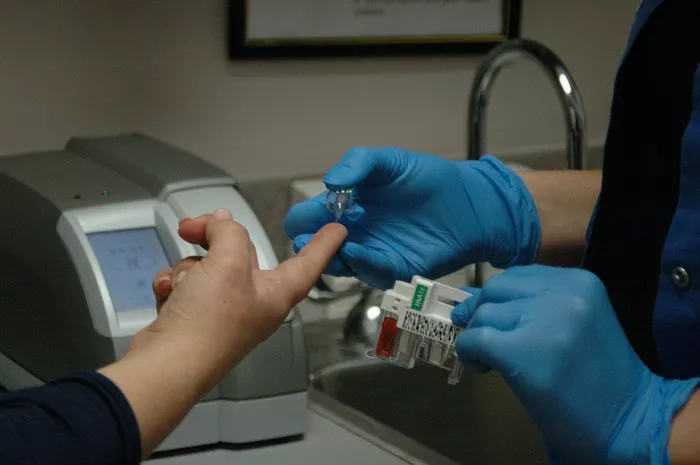Diabetes is a chronic condition that affects millions of people worldwide, characterized by high levels of glucose (sugar) in the blood. Effective management of diabetes is crucial for reducing the risk of complications and maintaining overall health. One essential tool in diabetes management is the measurement of A1C levels, also known as glycated hemoglobin. In this article, we will delve into the significance of A1C levels, their role in diabetes diagnosis and management, associated risks, and practical strategies for maintaining optimal blood sugar control.
What Is A1C?
A1C, or glycated hemoglobin, is a measure of the average blood glucose levels over the past two to three months. When glucose in the blood binds to hemoglobin (a protein in red blood cells), it forms glycated hemoglobin. The level of A1C reflects the amount of glucose that has been circulating in the blood during this time period. Unlike self-monitoring of blood glucose (SMBG) tests, which provide a snapshot of blood sugar levels at a specific moment, A1C offers a more comprehensive view of long-term blood sugar control.
Normal Range
In individuals without diabetes, the normal range for A1C levels typically falls between 4% and 5.6%. This range reflects healthy blood sugar control and indicates a lower risk of developing diabetes-related complications.
Diabetes Diagnosis
A1C levels are used as one of the diagnostic criteria for diabetes. According to the American Diabetes Association (ADA), a diagnosis of diabetes is typically made when the A1C level is 6.5% or higher. This threshold indicates sustained hyperglycemia and the presence of diabetes.
Target Range for Diabetes Management
For individuals with diabetes, the target range for A1C levels is generally below 7%. Achieving and maintaining A1C levels within this range can significantly reduce the risk of complications associated with diabetes, such as cardiovascular disease, nerve damage, kidney disease, and eye problems.
Risks of High A1C
Elevated A1C levels are associated with an increased risk of both short-term and long-term complications. Poor blood sugar control can lead to cardiovascular issues, including heart disease and stroke, as well as nerve damage (neuropathy), kidney disease (nephropathy), and eye problems (retinopathy). Additionally, uncontrolled diabetes can impair wound healing and increase the risk of infections.
Long-Term Complications
Consistently high A1C levels can lead to serious long-term complications that significantly impact quality of life. These complications may include:
- Cardiovascular disease: Increased risk of heart attack, stroke, and peripheral artery disease.
- Nerve damage (neuropathy): Tingling, numbness, pain, or weakness in the hands and feet.
- Kidney disease (nephropathy): Impaired kidney function and an increased risk of kidney failure.
- Eye problems (retinopathy): Damage to the blood vessels in the retina, leading to vision loss and blindness.
- Foot complications: Decreased blood flow and nerve damage increase the risk of foot ulcers and infections, which can progress to serious complications, including amputation.
Lifestyle Changes
Making lifestyle modifications is essential for managing A1C levels and reducing the risk of diabetes-related complications. Here are some practical tips for maintaining optimal blood sugar control:
- Follow a balanced diet: Focus on whole foods, including fruits, vegetables, lean proteins, and whole grains. Limit the intake of refined carbohydrates, sugary foods, and processed snacks.
- Engage in regular exercise: Aim for at least 150 minutes of moderate-intensity aerobic activity per week, such as brisk walking, cycling, or swimming. Incorporate strength training exercises at least two days a week to improve muscle strength and insulin sensitivity.
- Manage stress: Practice relaxation techniques, such as deep breathing, meditation, yoga, or tai chi, to reduce stress levels and improve overall well-being.
- Adhere to medication regimen: Take prescribed medications as directed by your healthcare provider. This may include oral medications, insulin therapy, or other injectable medications to help manage blood sugar levels.
Conclusion
Understanding and managing A1C levels are critical aspects of diabetes care. By maintaining A1C levels within the target range through lifestyle modifications, medication adherence, and regular monitoring, individuals with diabetes can reduce the risk of complications and improve overall health and well-being. If you have diabetes or are at risk of developing the condition, work closely with your healthcare provider to develop a comprehensive treatment plan tailored to your needs and goals. Together, you can take proactive steps to effectively manage diabetes and live a fulfilling life.
Related Topics:
What is the Difference Between Blood Sugar & Glucose?
Do You Know The Difference Between Blood Glucose & Blood Sugar?

























